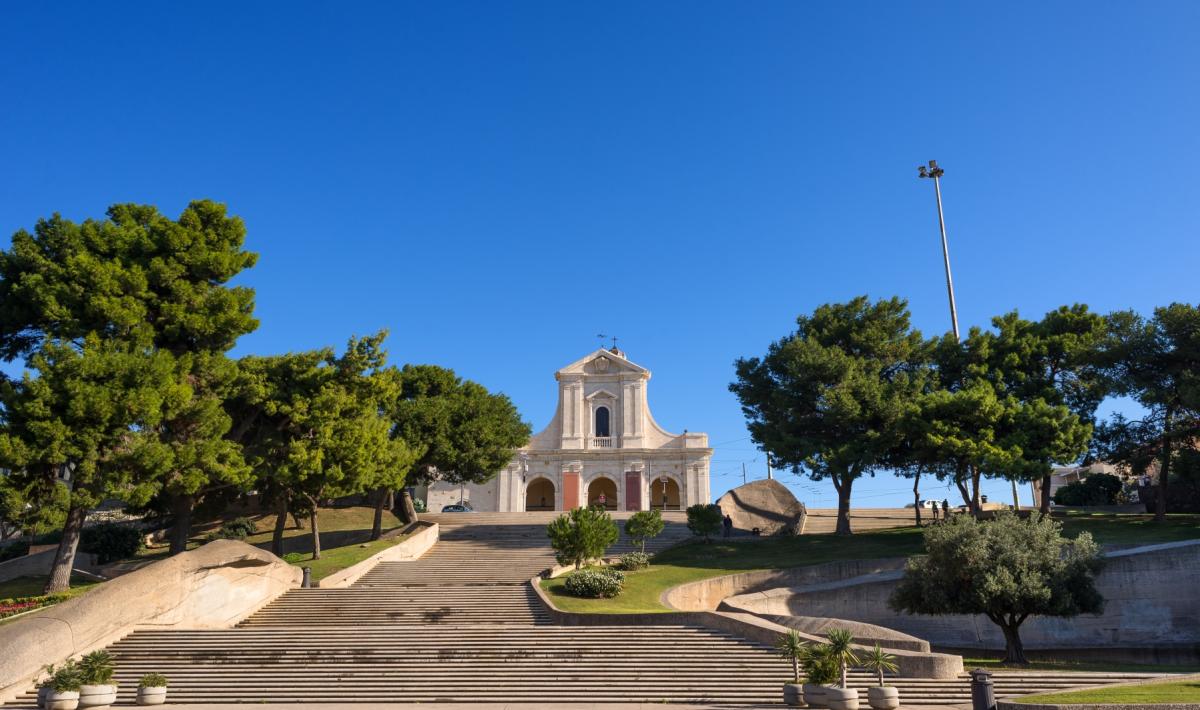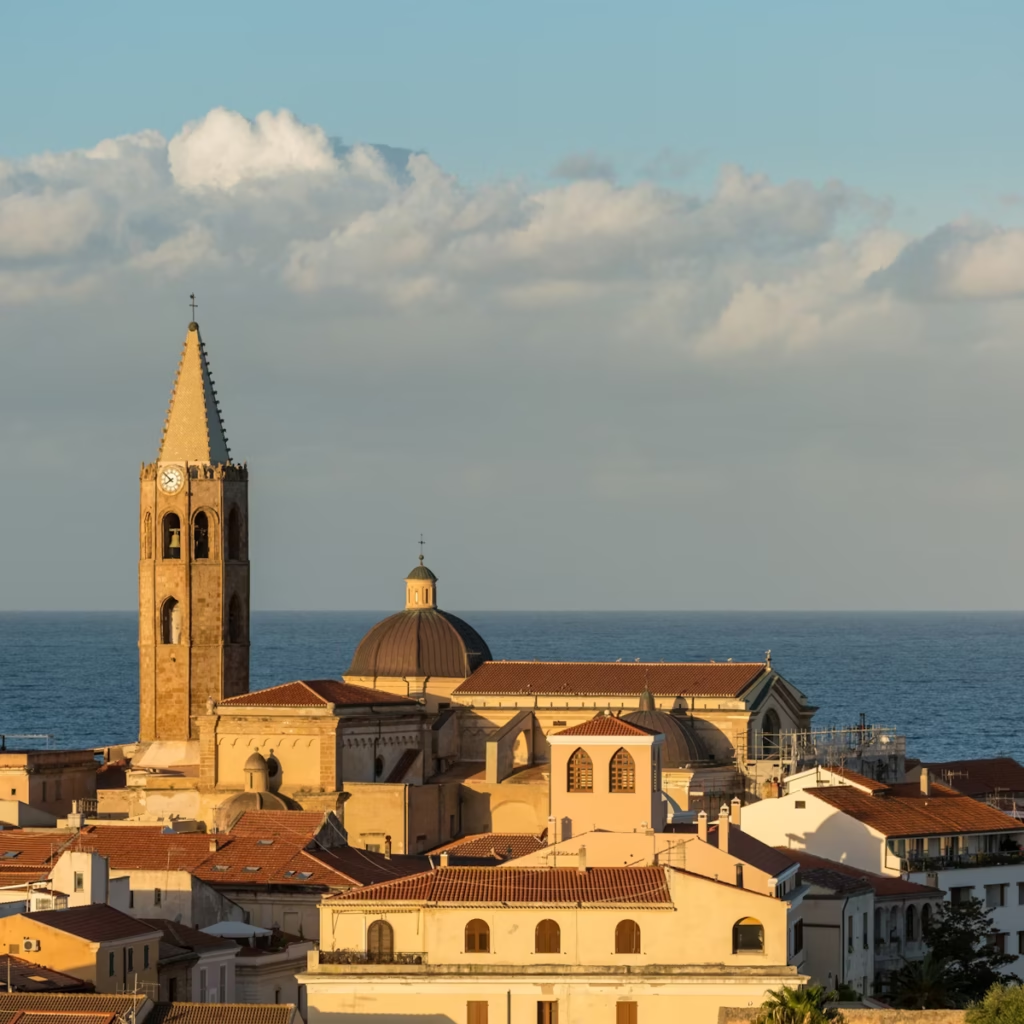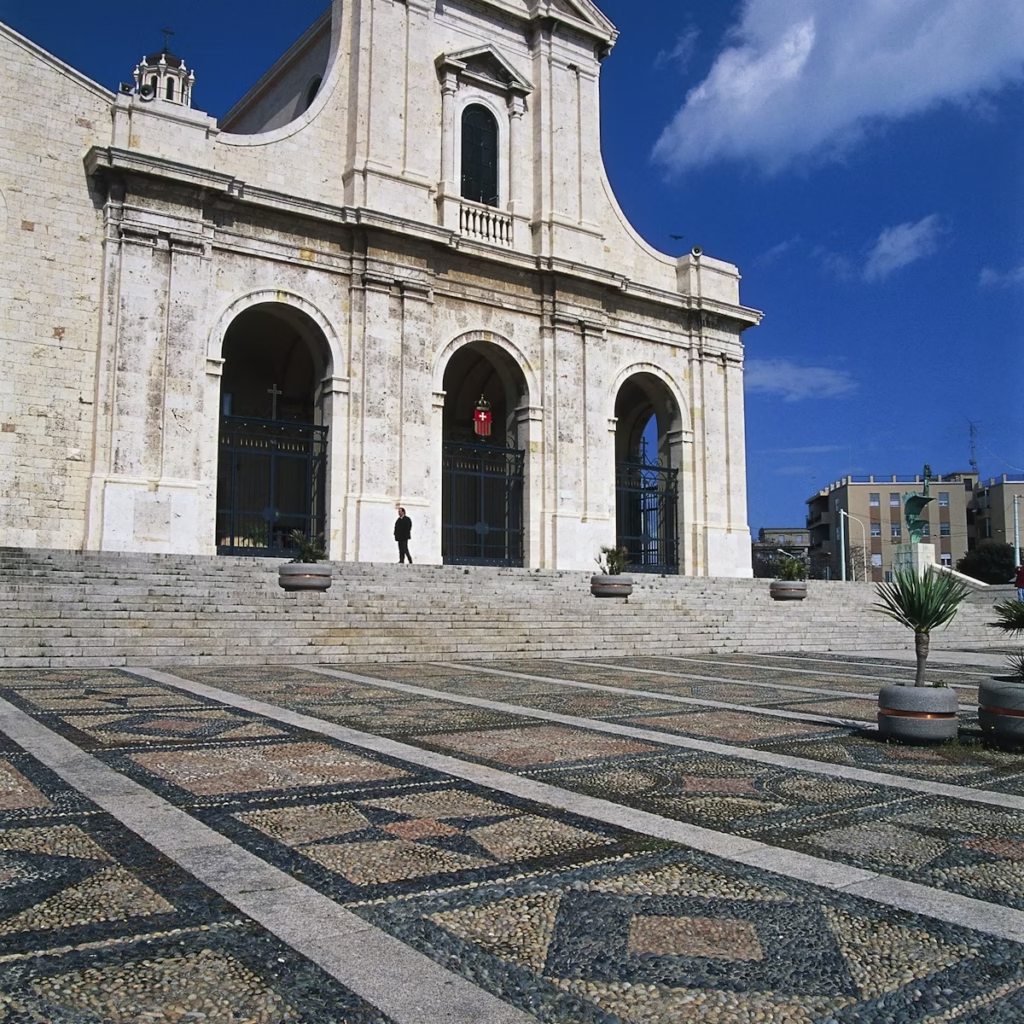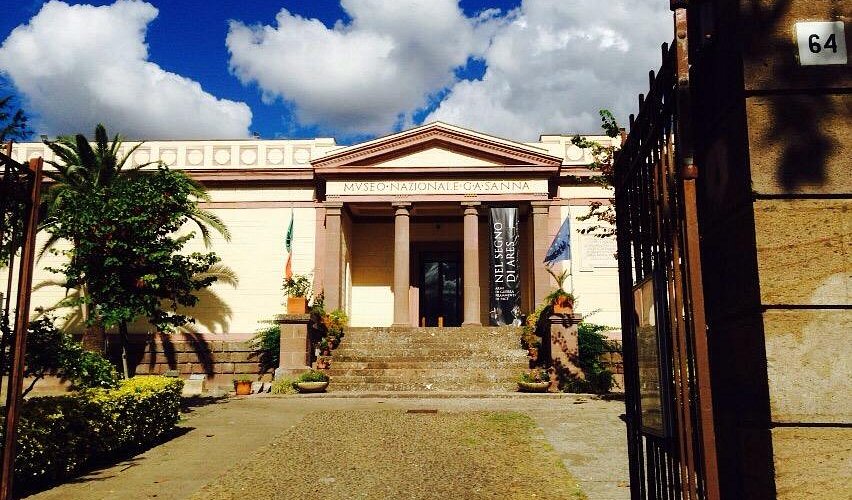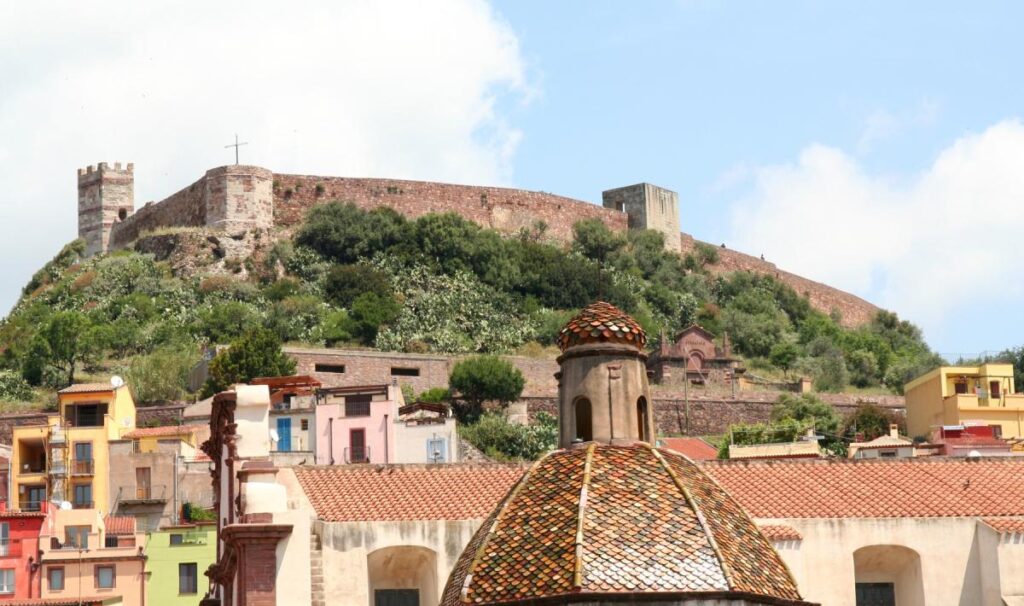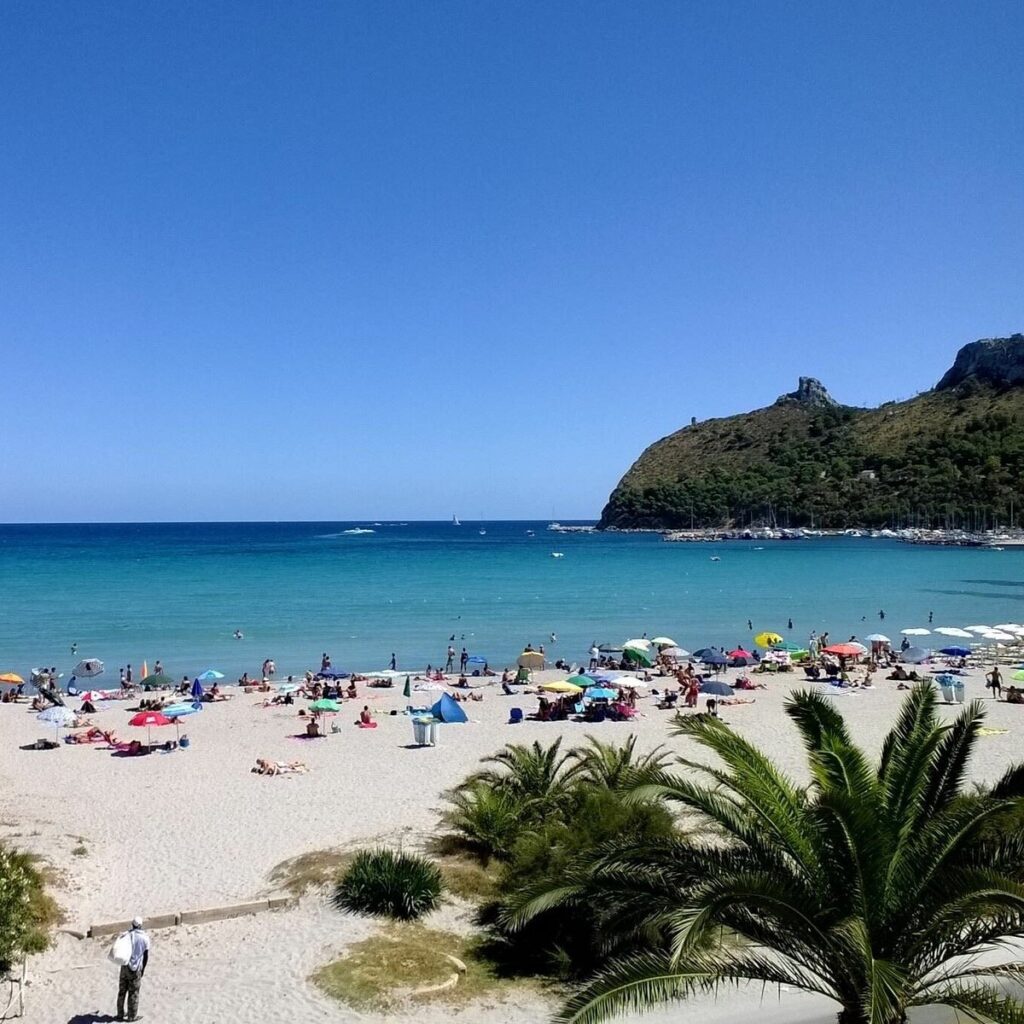Alghero’s most impressive church is a striking example of architectural balance. Originally constructed in the 14th century in the Catalan Gothic style, it underwent significant Renaissance renovations following a partial collapse in 1593.
Inside, highlights include an 18th-century polychrome marble altar and a haunting 17th-century wooden sculpture of a gaunt Christ bound to a column—both compelling focal points of devotion and artistry.
Through the sacristy, visitors can step into a serene 14th-century cloister, where 22 sandstone columns support elegant round arches. The warm, buttery hue of the stone adds a glowing softness to the space, making it especially enchanting during summer evening concerts held here. A bell tower completes the setting, enhancing the church’s quiet grandeur.

